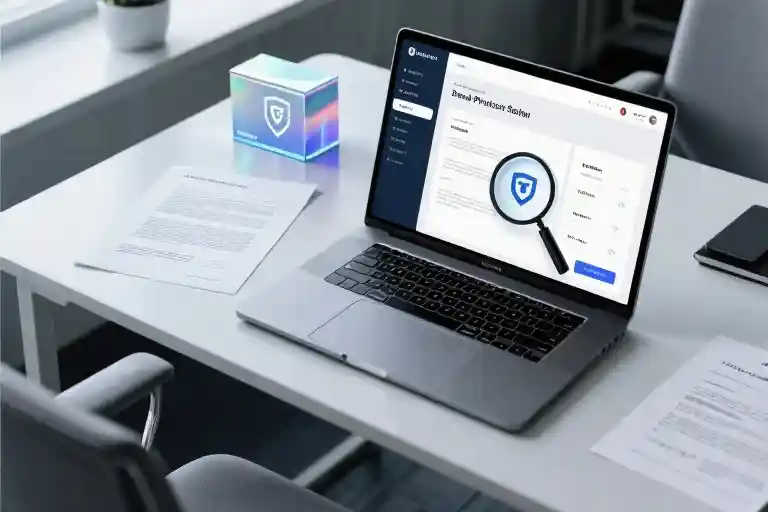The global counterfeit market thrives in shadows, quietly siphoning billions from legitimate businesses while eroding consumer trust. Recent estimates place the annual trade in fake goods at over $500 billion worldwide – a staggering figure that continues to grow alongside e-commerce expansion. For brands both large and small, this isn’t just about lost revenue; it’s about protecting hard-earned reputations and maintaining the integrity that customers expect.
Trademark protection stands as the first line of defense in this ongoing battle. More than legal paperwork or corporate formalities, these registered symbols represent years of brand building and customer loyalty. When counterfeiters replicate logos and designs, they’re not just stealing products – they’re hijacking relationships between companies and their audiences.
Consider the three stripes on an Adidas sneaker or the interlocking Cs of Chanel. These aren’t mere decorations; they’re visual handshakes between brand and buyer, promises of quality and authenticity. That’s why companies invest millions in trademark protection programs, from courtroom battles to consumer education campaigns.
Some notable examples demonstrate the range of approaches: Adidas’ aggressive legal strategy around its iconic stripes, Rolex’s combination of investigation and public awareness efforts, and Amazon’s platform-level solutions like Brand Registry. Each tackles the counterfeit challenge differently, but all share a common understanding – protecting trademarks means protecting the business itself.
The stakes couldn’t be higher. Beyond financial losses, counterfeit goods can damage brand perception, create safety hazards, and even fund organized crime. Yet many businesses still treat anti-counterfeiting as an afterthought rather than a core strategy. This oversight creates opportunities for copycats to flourish, especially in today’s borderless digital marketplace where fake products can reach millions with just a few clicks.
How Industry Leaders Fight Counterfeiting Wars
Adidas built its brand identity on three simple stripes. That iconic design became so valuable that the company now spends millions annually defending it in courtrooms worldwide. Their legal team operates like a special forces unit, tracking down infringements with military precision. A small sportswear company adding two extra stripes to their sleeves might seem harmless, but Adidas sees it differently – each unauthorized use dilutes their hard-earned brand equity. Their aggressive litigation strategy has set important precedents in trademark law, proving that even simple design elements deserve protection when they become synonymous with quality.
Luxury watchmaker Rolex takes a more multidimensional approach. While they certainly pursue legal action, their strategy recognizes that lawsuits alone can’t solve the counterfeit problem. They employ former intelligence officers who conduct global investigations, infiltrating counterfeit networks. But what truly sets Rolex apart is their consumer education program. Detailed authentication guides help potential buyers spot the subtle differences between genuine craftsmanship and cheap imitations. This two-pronged attack – cutting off supply through legal means while reducing demand through education – demonstrates how brands can fight counterfeits on multiple fronts.
Amazon’s Brand Registry program represents the digital frontline in brand protection. For online marketplaces, the counterfeit battle happens at scale – thousands of new listings every minute. Amazon’s solution combines technology with human review, giving brands tools to quickly identify and remove infringing products. The system learns from each report, becoming smarter at spotting fakes before they gain traction. While critics argue platforms should do more, Amazon’s approach shows how e-commerce giants are evolving from passive hosts to active partners in brand protection.
These case studies reveal there’s no single right way to combat counterfeiting. Adidas’ legal bulldozer, Rolex’s spy-and-educate tactics, and Amazon’s tech-powered oversight all achieve results through different means. The common thread? A recognition that brand protection isn’t just about lawsuits – it’s about creating systems that make counterfeiting harder while making authenticity easier to verify. Each company tailored their approach to their specific vulnerabilities, proving effective anti-counterfeiting strategies must be as distinctive as the brands they protect.
The Anti-Counterfeiting Toolkit: Four Proven Strategies
Legal action remains the most direct weapon in brand protection. Adidas’ relentless defense of its three-stripe trademark demonstrates how litigation can set industry standards. Their success in court doesn’t just protect individual products – it establishes legal precedents that make future enforcement easier. The process typically begins with digital forensics teams documenting infringement evidence, followed by cease-and-desist letters. When necessary, brands escalate to federal lawsuits seeking injunctions and damages. Luxury watchmaker Rolex supplements this approach with private investigators who infiltrate counterfeit networks, gathering evidence for criminal prosecution.
Technology creates invisible barriers that counterfeiters struggle to replicate. Louis Vuitton’s adoption of blockchain technology allows customers to verify product authenticity through encrypted digital certificates. Near-field communication (NFC) chips embedded in handbags communicate with smartphones, telling the item’s production story. These solutions address the psychological aspect of counterfeiting – the luxury experience can’t be duplicated with a QR code sticker. Amazon’s transparency program uses similar serialization technology, allowing brands to track items through the supply chain while giving consumers instant verification.
Consumer education transforms customers into brand advocates. Rolex’s authentication guides don’t just help avoid fakes – they deepen product appreciation. The Swiss manufacturer publishes detailed comparisons of genuine versus counterfeit watch components, from the weight of the second hand to the sound of the movement. This strategy acknowledges that counterfeit purchases often begin with innocent confusion rather than deliberate deception. Gucci takes a different approach through its ‘Gucci Equilibrium’ platform, explaining how authentic products support ethical manufacturing – an appeal to values beyond mere ownership.
Platform partnerships create systemic solutions. Amazon’s Brand Registry gives rights owners tools to automatically scan listings for potential infringement. The program’s image-based search identifies products using protected logos even when keywords avoid trademarked terms. More importantly, it establishes direct communication channels between brands and Amazon’s counterfeit investigations team. Luxury conglomerates like LVMH have taken this further by working with customs agencies worldwide, training officials to recognize counterfeit shipments through subtle details like stitching patterns and hardware finishes.
The most effective protection strategies combine multiple approaches. Adidas pairs litigation with consumer reporting portals where fans can submit suspicious product sightings. Chanel’s authentication workshops for resellers create industry-wide quality standards while gathering market intelligence. What unites these diverse tactics is their focus on making genuine products more valuable – not just making counterfeits harder to produce. When customers understand the craftsmanship behind a real Rolex or the sustainability practices behind authentic Adidas gear, price becomes secondary to value.
Practical Anti-Counterfeiting Strategies for Smaller Brands
The battle against counterfeit products often feels like a luxury only major corporations can afford. But protecting your brand’s integrity doesn’t require Rolex-level budgets or Amazon-scale legal teams. Here’s how growing businesses can implement effective trademark protection without breaking the bank.
Social Media Monitoring Tools That Deliver
For brands watching every dollar, these three platforms offer the best balance of cost and effectiveness:
Red Points stands out for its automated takedown system. The platform scans major marketplaces and social networks, then handles the entire removal process once counterfeit listings are identified. One mid-sized handbag designer reported removing 87% of fake listings within three months of implementation.
BrandShield takes a more analytical approach, using AI to track counterfeit networks rather than just individual listings. This helps identify manufacturing sources – particularly valuable for brands facing wholesale duplication rather than simple logo misuse.
Incopro’s Talisman specializes in visual recognition, making it ideal for brands with distinctive packaging or product designs. Their dashboard prioritizes threats by potential business impact, helping small teams focus on the most damaging infringements first.
The key with any monitoring tool is setting clear parameters. Tracking every possible variation of your brand name across all platforms will drown you in false positives. Start with your top three sales channels and expand as resources allow.
Navigating Cross-Border Protection Programs
When counterfeit goods cross international borders, so must your protection strategy. Several initiatives streamline this process:
The Alibaba Anti-Counterfeiting Alliance (AACA) offers faster takedowns on Alibaba platforms to members, with average response times dropping from days to hours. Membership requires submitting your trademark registration and product authentication guidelines.
For European protection, the EUIPO’s Anti-Counterfeiting Toolbox provides templates for customs applications. Many member states allow rights holders to submit a single application covering all border points.
U.S. brands should register with CBP’s e-Recordation program. This puts your trademark information directly into customs databases, helping officials identify fakes during inspections. The $190 per class fee proves far cheaper than individual seizure actions.
Building Consumer Reporting Networks
Your customers can become your most cost-effective counterfeit watchdogs when properly engaged. Consider these elements for your reporting program:
Verification Made Simple
Create a dedicated page showing authentic vs. fake comparisons. Rolex’s approach works well – high-resolution images highlighting often-missed details like serial number engraving quality.
Streamlined Reporting
Embed a simple form accepting photos, seller information, and purchase details. Auto-respond with instructions for verifying authenticity if consumers suspect they’ve bought fakes.
Rewards That Motivate
Rather than cash rewards (which can attract fraudulent claims), offer exclusive previews or loyalty points. One cosmetics brand saw a 212% increase in valid reports after introducing a “Brand Defender” badge for top contributors.
Follow-Up Transparency
When consumers report fakes, share what actions were taken (without disclosing confidential details). This closed-loop communication builds trust and encourages future participation.
The most effective small-brand strategies combine technology with human insight. Automated tools catch the obvious infringements, while engaged communities help identify sophisticated fakes that slip through digital nets. Start with one or two high-impact initiatives rather than attempting to mirror corporate brand protection departments. Consistent, focused efforts often yield better results than sporadic grand gestures.
Taking Action Against Counterfeiting: Your Next Steps
Brand protection isn’t just for industry giants with unlimited legal budgets. Whether you’re managing a global luxury label or growing a startup, these three immediate actions can significantly strengthen your defense against counterfeiters.
1. Register Your Trademarks Everywhere That Matters
Adidas didn’t build its three-stripe defense overnight. Start by securing your intellectual property rights through:
- Your national trademark office (USPTO for America, EUIPO for Europe)
- Key export markets (China’s CNIPA sees heavy counterfeit activity)
- Amazon Brand Registry if you sell on the platform
The process often costs less than pursuing a single infringement case later. One emerging designer we spoke with prevented 23 counterfeit listings within weeks of registry approval.
2. Implement Basic Monitoring
Rolex’s anti-counterfeiting team didn’t start with hundreds of investigators. Begin with free tools:
- Google Alerts for your brand name + “fake” or “replica”
- Reverse image searches on major marketplaces
- Social media hashtag tracking (#Fake[YourBrand])
Upgrade to affordable services like Red Points or BrandWatch when ready. Even basic monitoring helps identify problem areas – one cosmetics brand discovered 80% of fakes originated from two cities through simple geographic tracking.
3. Educate Your Most Valuable Detectives: Customers
Chanel’s authentication guides don’t just protect buyers – they create millions of brand advocates. Start small:
- Add “How to Spot Fakes” to product packaging
- Create a simple webpage highlighting 3 key authenticity markers
- Train customer service to recognize common counterfeit reports
A UK watch retailer reduced counterfeit returns by 40% after adding a QR code linking to authentication videos in every shipment.
Where to Go From Here
Global Trademark Offices
- United States: USPTO Trademark Portal
- European Union: EUIPO Registration
- China: CNIPA Application Guide
Platform Reporting Portals
Deeper Learning
Remember, counterfeiters adapt quickly – what worked for Rolex in 2010 may need updating today. The most effective strategy combines legal protection, technological tools, and human vigilance. Start where you are, use what you have, and build your defense one step at a time.


